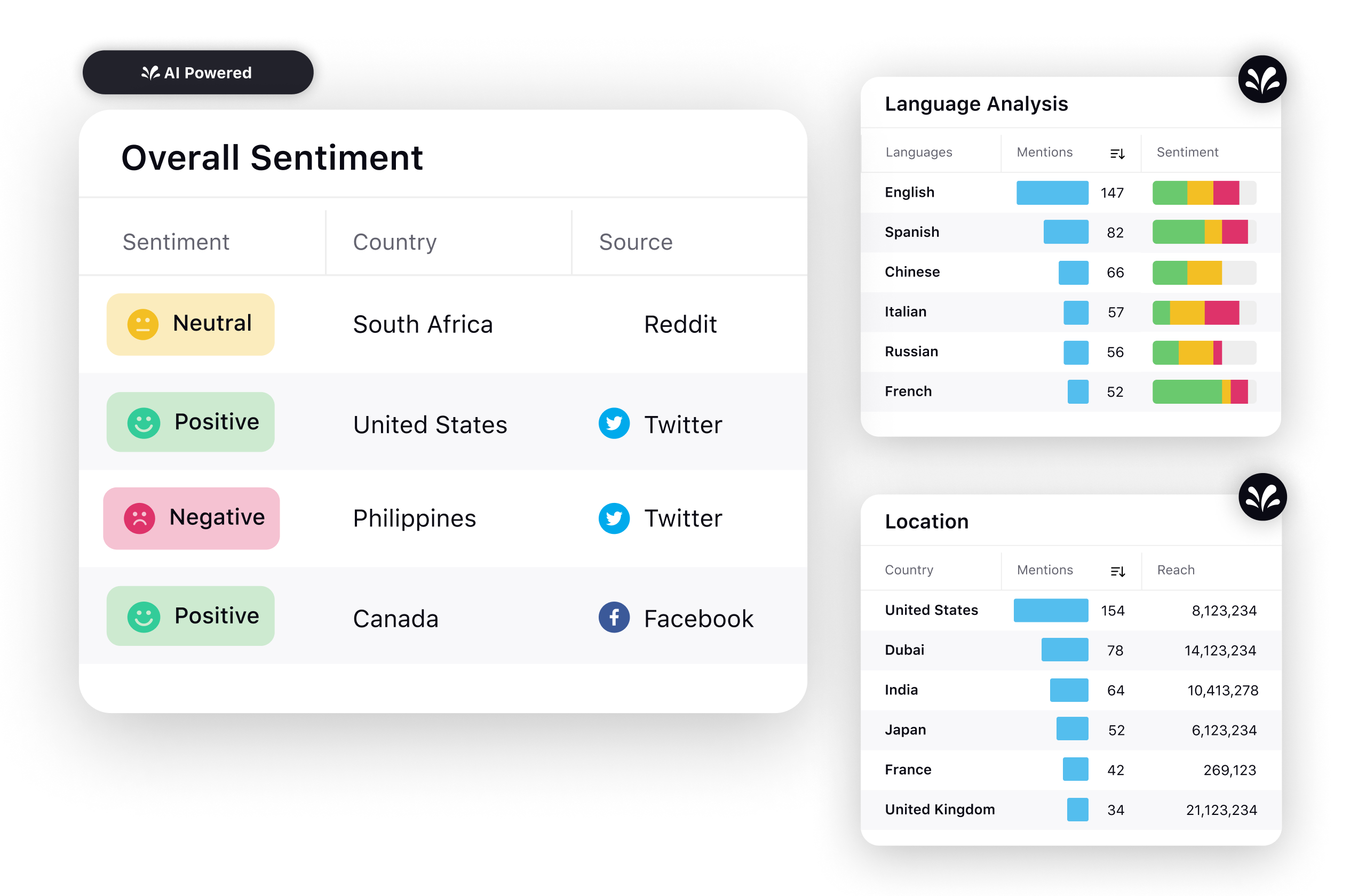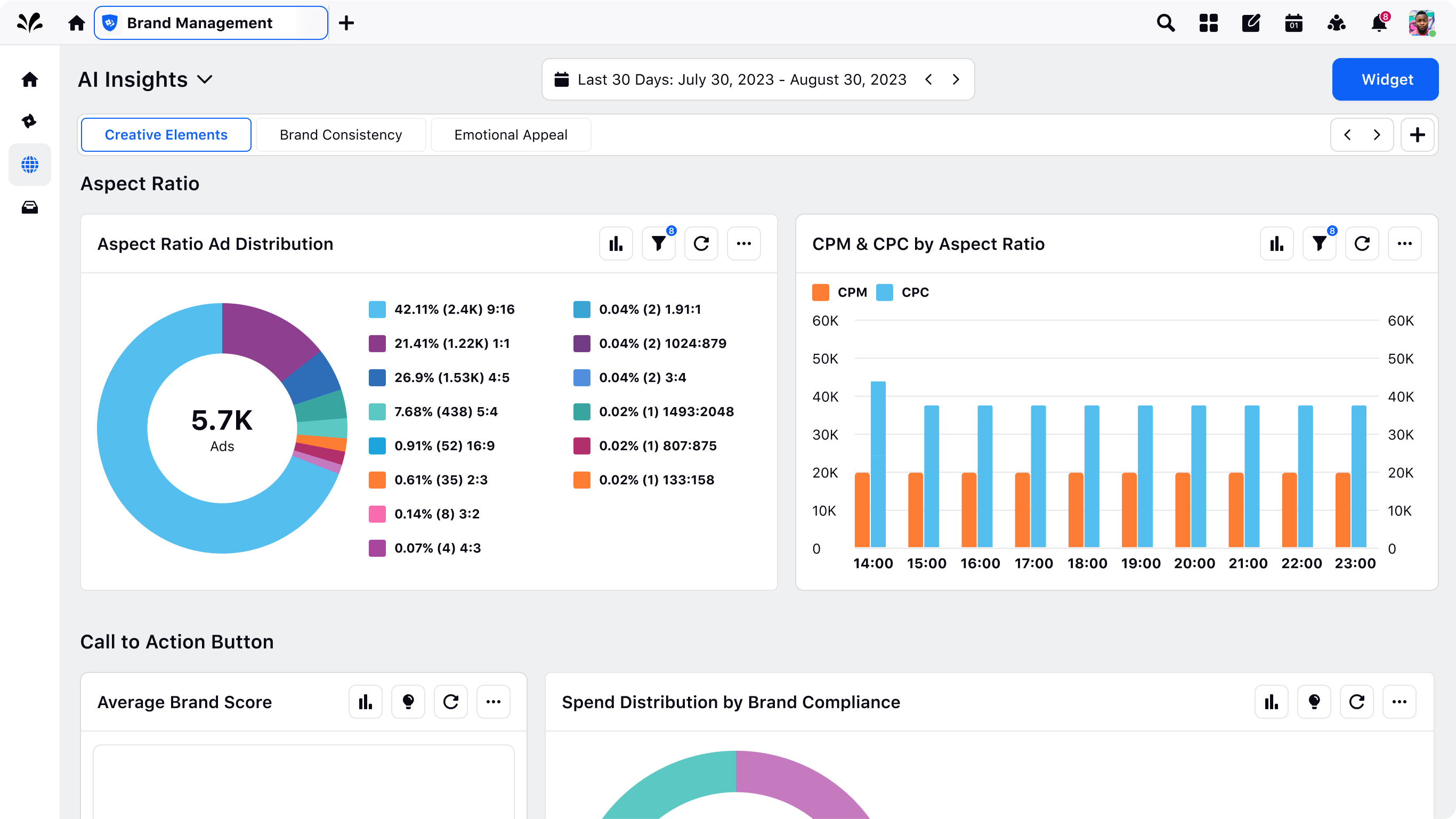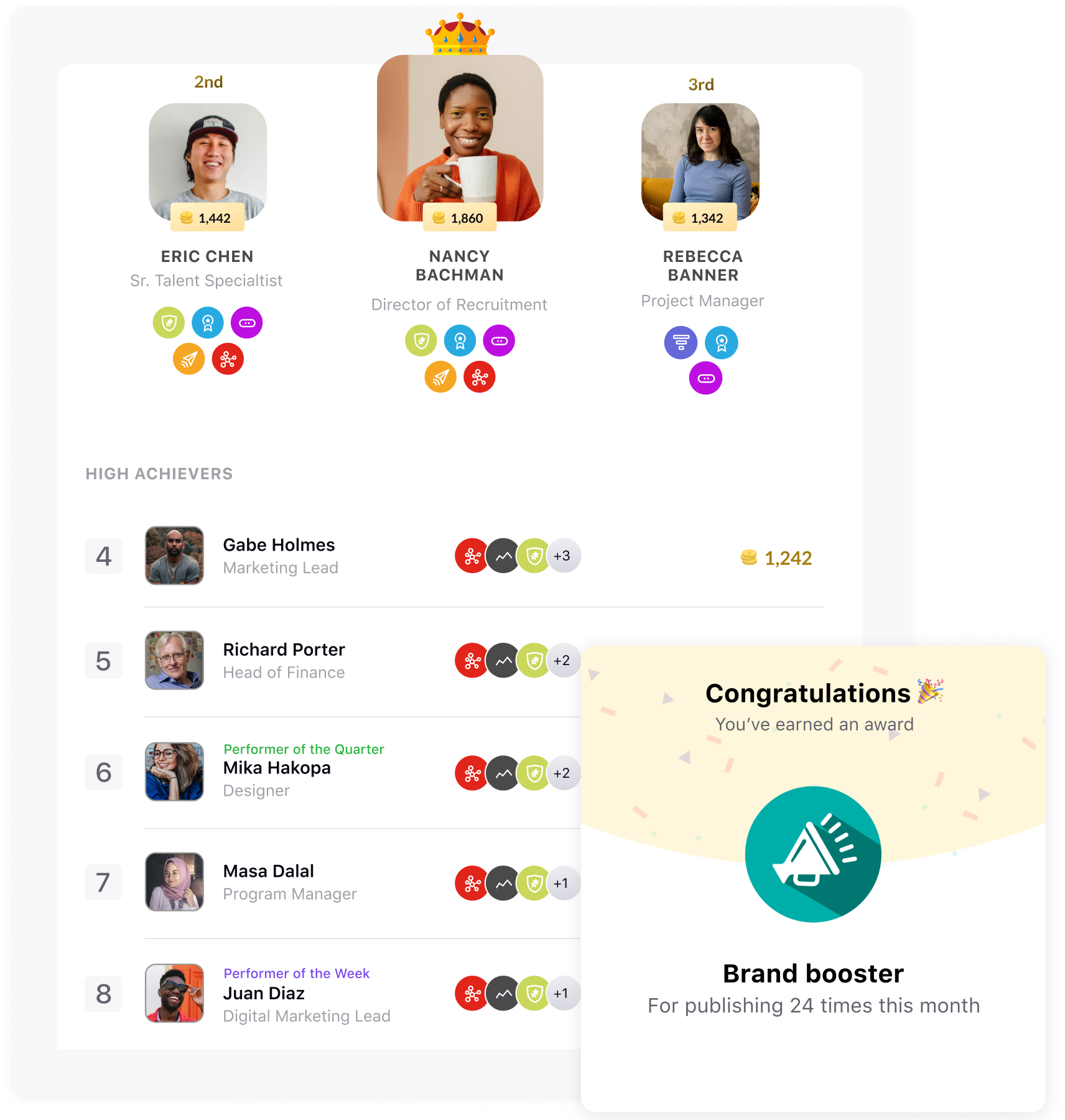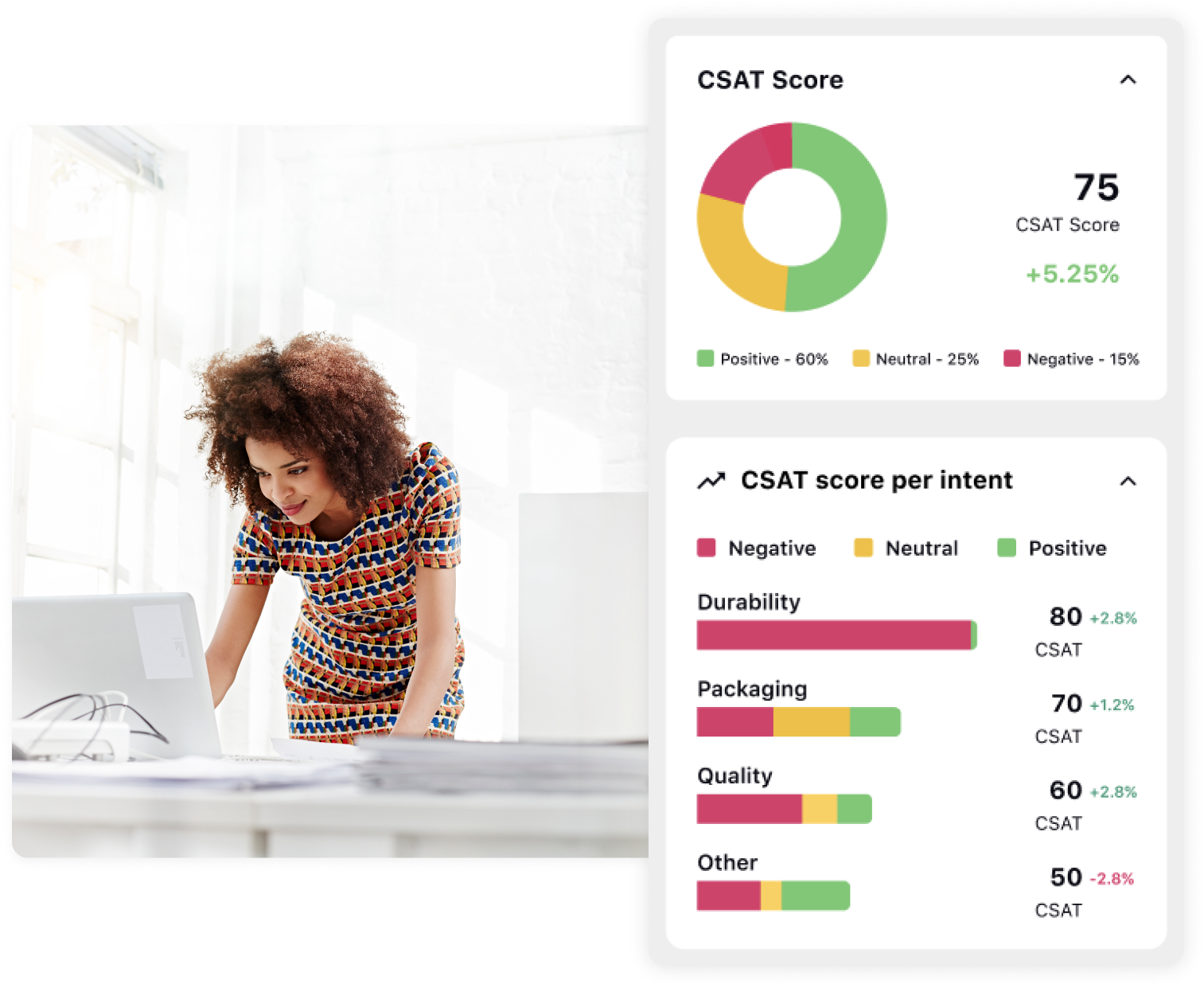What is customer obsession?
Customer obsession is a business philosophy where you position your customers at the focal point of every decision and action your company takes. In the business world, customer obsession means more than just responding to customer needs. It entails proactively anticipating those needs and continually innovating to exceed customer expectations at every level - sales, marketing, product, communication and support.
Need a relatable example?
Here goes: Zappos going above and beyond in supporting its customers is common knowledge. One of its reps spent close to 10 hours on a customer call and won kudos from the company for it. The brand became the flagbearer of customer obsession and won hearts and tons of business by demonstrating an unwavering commitment toward customers.
Read on to understand the key benefits of customer obsession with more examples and inspiration.
Why is customer obsession important?
To achieve lasting success in a hypercompetitive business ecosystem, prioritizing customers is not only essential. it's critical to survive and thrive.
It drives business growth and revenue
Focusing on long-term customer needs, not just immediate ones, can drive revenue through upsells and cross-sells. When you love your customers and they love you back, customer retention soars, leading to a more reliable, recurring revenue stream.
It fosters brand loyalty
Brand loyalty doesn't happen by accident. When you consistently exceed expectations, your customers become more than just the users of your product/service. They become advocates for your brand, willing to recommend you to their networks. These advocates amplify your reach and build your brand reputation, acting as an unpaid sales force.
It has a transformative impact on the company culture
When your organization is customer-obsessed, everyone from product development to customer support aligns and works toward a common goal. Shared values lead to employee engagement. Team morale and productivity improve organically, setting off a virtuous cycle for your brand.
Essential qualities to nurture customer obsession
To create a customer-centric company culture, focus on developing specific individual and organizational traits, such as:
Emotional intelligence: Understand your customers by tuning into their needs. Practice customer empathy to see their problems and actively listen to what they say, as well as what they don't. Your customer-facing staff should be able to gauge customer frustration before it leads to escalations and strive towards delivering customer delight in every customer service scenario.
Predictive insight: The winds are in favor of proactive customer support. Your agents and reps should be able to pre-empt customer needs before they are voiced explicitly. But how? Utilize consumer insights to understand their preferences and challenges. Map out possible paths customers might take with your service.
By delivering proactive service, your customer satisfaction multiplies and you can hope to become the preferred brand for your customers. For accurate insights, you will need to leverage a sophisticated analytics and reporting solution that can translate historical customer data and interactions into actionable insights.
Adaptability: To succeed in the fast-changing business world, adaptability is key. Being agile and flexible in meeting customer expectations is crucial. Stay ahead by quickly adjusting plans and actively listening to feedback. This shows that you genuinely care about your customers.
How to develop a customer-obsessed culture in your organization
Here are five simple steps to help you get started and turn your ideas into actionable results.
Step 1: Assess the current landscape - Where do you stand?
Before implementing strategies and changes, assess your current customer interactions. You must know the starting point to map customer journeys successfully. For a measured look, gather data from:
Customer surveys and reviews: Analyze customer feedback thoroughly. Look beyond ratings and dive into the detailed feedback.
Employee feedback: Include the observations of frontline employees in your audit for unique and valuable insights from direct customer interactions.
Data analytics: Use metrics such as customer lifetime value (CLV), net promoter score (NPS) and customer satisfaction score (CSAT) to gain insights into your customer relationships.

Quick tips:
Share customer insights and feedback with your entire team to ensure everyone is informed about your current customer status.
Focus on quick wins and demonstrate your commitment to improvement. Prioritize actions that can be implemented swiftly.
Engage your leadership team from the start for better customer focus and support.
Step 2: Develop a customer-centric vision and strategy
Now that you understand where you stand, the next pivotal move is to chart where you want to go. A customer-centric vision will serve as your roadmap, guiding every decision and strategy.
Vision:
Mission statement: Review and revise your mission statement to align it with a customer-centric approach. This will keep your team focused on a common goal.
Core values: Align your company's core values with a focus on customer obsession. Ensure that empathy, proactive service and continuous innovation are integral to your guiding principles.
Organizational strategy:
Short-term goals: Break down your vision into actionable short-term goals that serve as benchmarks for the next quarter or year.
Long-term roadmap: Outline the milestones you aim to hit in the next 3–5 years. Determine where your business stands in the broader customer experience landscape.
Choose the right metrics: Opt for customer service metrics that align with your vision. Measure the success of your strategies beyond sales and revenue through customer experience metrics.
Quick tips:
Conduct team workshops to transform big ideas into actionable steps, ensuring active participation and accountability among team members.
Continuously monitor your goals. Changes are not failures; they are opportunities for improvement and putting customers first.
Align customer-focused teams, such as product and marketing, towards a common goal of prioritizing customer needs.
Step 3: Empower agents - The frontline of customer obsession
Transforming your agents into customer experience champions is crucial for becoming a customer-obsessed organization. How your employees engage with your customers determines the success of your strategy.
Training programs: Develop specialized agent training programs focusing on customer obsession. These programs should include empathy exercises and hands-on training on customer-focused technology tools.
Read more: Coaching tips to transform your customer support agents
Incentive structures: Revise your performance metrics to reward customer-centric behaviors with new KPIs focused on customer satisfaction and advocacy.
Open channels for feedback: Build internal platforms for employees to share customer insights and suggestions freely.

Quick tips:
Empower your team to make quick customer-centric decisions, fostering trust and enhancing issue resolution efficiency.
Involve your team in creating customer-focused strategies to boost morale and foster a sense of ownership.
Continually educate your team to adapt to evolving customer needs.
Step 4: Measure success via KPIs
To effectively track your progress and make data-driven adjustments to your strategy, establish the right Key Performance Indicators (KPIs). Here's a list of customer-focused metrics that every obsessed company should track and optimize:
CSAT: Assess customer satisfaction immediately after interactions to identify areas for improvement.

NPS: Use Net Promoter Score (NPS) to measure customer loyalty over time. It indicates whether customers are likely to repurchase from you or refer others to your business.
Customer Effort Score (CES): Assess how easily customers interact with your service. Reduced effort leads to increased satisfaction.
Quick tips:
Assess your performance by comparing your numbers to competitors or industry peers to gain valuable insights into your position.
Regularly monitor your KPIs and adapt your goals and plans accordingly.
Establish a clear understanding of company-wide KPIs to prioritize customer satisfaction.
Step 5: Iterate and evolve - Keeping the customer obsession alive
Customer obsession is an ongoing endeavor, not a one-time achievement. After setting your KPIs, continually refine and deepen your focus on the customer. Keep the culture vibrant by regularly updating your strategy.
Regular feedback loops: Conduct weekly or monthly meetings to review customer feedback and KPIs. Assess strengths and identify areas for improvement.
Technology updates: Keep up with customer-centric technologies to enhance customer service. For instance, consider upgrading your customer relationship management (CRM) system or adding a chatbot.
Team retraining and upskilling: Retrain and upskill your team to meet evolving customer expectations. Invest in regular sessions to enhance their skills and address emerging customer needs.
Quick tips:
Celebrate achieving major customer satisfaction goals to boost team morale and highlight its significance.
Test your service from the customer's perspective to gain valuable insights.
Be adaptable and adjust your plans based on customer feedback and emerging trends.
Customer obsession in action: Inspiring
real-world examples
Let's look at some examples of leading companies prioritizing their customers and setting the benchmark for others.
Amazon: Setting the gold standard in customer obsession
Amazon Prime prioritizes its customers and demonstrates this through benefits like free shipping, streaming and exclusive deals. Amazon's US membership is projected to reach 180 million by 2024, up from 168.5 million in 2022. Prime members tend to spend twice as much as non-members. This clearly illustrates the positive impact of customer-centricity.
Gartner: Leveraging insights for customer satisfaction
Gartner is a research company that utilizes customer data to develop unique solutions that set them apart. Among service leaders, 84% say customer data is key for their goals in 2023. Gartner uses customer data to meet customer needs, ensuring popularity and customer loyalty.
Netflix: Personalization at its best
Netflix understands viewers' preferences. They use special formulas to ensure that each of its 238+ million subscribers sees content tailored to their preferences. The majority of viewers follow Netflix's suggestions, accounting for 80% of their activity. This approach results in high customer satisfaction and retention.

What can you learn from these stalwarts?
Listen to your customers: Like Amazon, pay attention to customer preferences. Your service offerings should make their lives easier.
Use data wisely: Follow Gartner's lead and use data to refine your strategies. It's not just about numbers; it's about understanding what those numbers signify.
Tailor the experience: Take a cue from Netflix and ensure your offerings are as customized as possible. One-size-fits-all is a relic of the past.
Why make Sprinklr your partner in fostering customer obsession
Ready to improve your branding through customer obsession but unsure where to start? That's where Sprinklr comes in. Just like Amazon focuses on Prime membership perks, Gartner leverages insights and Netflix personalizes viewer experiences, Sprinklr's Unified CXM platform helps you achieve similar results but on a consolidated interface.
From data analytics to customer engagement, the unified CXM lets you see the complete customer journey and tailor your interactions to meet and exceed their expectations.
Want customer loyalty on par with Amazon or data analytics like Gartner? Unified CXM aligns seamlessly with your customer obsession goals. Take a Sprinklr demo today, and experience the tangible benefits of a customer-obsessed strategy.
Frequently Asked Questions
related products
Thank you for contacting us.
A Sprinklr representative will be in touch with you shortly.
Contact us today, and we'll create a customized proposal that addresses your unique business needs.
Request a Demo
Welcome Back,
No need to fill out any forms — you're all set.






